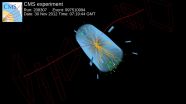(Press-News.org) Boston, MA -- Adults over 50 who have persistent symptoms of depression may have twice the risk of stroke as those who do not, according to a new study led by researchers at Harvard T.H. Chan School of Public Health. Researchers found that stroke risk remains higher even after symptoms of depression go away, particularly for women.
The study will be published online May 13, 2015 in the Journal of the American Heart Association.
"This is the first study evaluating how changes in depressive symptoms predict changes in stroke risk," said lead author Paola Gilsanz, Yerby Postdoctoral Research Fellow at Harvard Chan School. "If replicated, these findings suggest that clinicians should seek to identify and treat depressive symptoms as close to onset as possible, before harmful effects on stroke risk start to accumulate."
The study looked at health information from 16,178 men and women ages 50 and older participating in the Health and Retirement Study between 1998 and 2010. Participants were interviewed every two years about a variety of health measures, including depressive symptoms, history of stroke, and stroke risk factors. There were 1,192 strokes among participants during the study period.
Compared to people with low depressive symptoms at two consecutive interviews, those with high depressive symptoms at two consecutive interviews were more than twice as likely to have a first stroke. Stroke risk remained elevated even among participants whose depressive symptoms went away between interviews, particularly for women. Those with depressive symptoms that began between interviews did not show signs of elevated stroke risk. Participants younger than 65 had greater stroke risk linked to their depressive symptoms than older participants with depressive symptoms.
The researchers suggest that depression may influence stroke risk through physiological changes involving accumulation of vascular damage over the long term. Damage may also be incurred indirectly through depression's effect on health behaviors, including increased risk of smoking and physical inactivity.
"Because this is the first study to take this approach, we need replication of findings in independent samples, with people of different age groups, and exploring different reasons that depressive symptoms get better," said senior author Maria Glymour, associate professor in the Department of Epidemiology and Biostatistics at the University of California, San Francisco, who worked on the research while at Harvard Chan School. "The surprising results make such replications even more urgent."
INFORMATION:
Other Harvard Chan authors involved in the study include Eric Tchetgen Tchetgen, associate professor of biostatistics and epidemiologic methods, Laura Kubzansky, professor of social and behavioral sciences, and Ichiro Kawachi, John L. Loeb and Frances Lehman Loeb Professor of Social Epidemiology.
The HRS (Health and Retirement Study) is supported by the National Institute on Aging (NIA U01AG009740) and is conducted by the University of Michigan. Funding for this study was provided by Eunice Kennedy Shriver National Institute for Child Health and Human Development at NIH (R24HD041023 to Capistrant); the National Institute of Neurological Disorders and Stroke at NIH (T32 NS048005 to J.R. Marden); the National Heart, Lung, and Blood Institute at NIH (1F31HL112613 to Gilsanz); the National Institute of Mental Health at NIH (1RC4 MH092707 to Walter, Kubzansky, and Glymour); the Initiative for Maximizing Student Development (5R25GM055353 to Gilsanz); the National Institute on Aging (R21 AG03438502); the American Heart Association (grant 10SDG2640243 to Glymour and Gilsanz and 09PRE2080078 to Capistrant) and National Institute of Allergy and Infectious Diseases at NIH (grants AI113251 and AI104459 to Tchetgen Tchetgen) and National Institute of Environmental Health Science (grant AI113251 to Tchetgen Tchetgen).
"Changes in Depressive Symptoms and Incidence of First Stroke Among Middle-Aged and Older US Adults," Paola Gilsanz, Stefan Walter, Eric J. Tchetgen Tchetgen, Kristen K. Patton, J. Robin Moon, Benjamin D. Capistrant, Jessica R. Marden, Laura D. Kubzansky, Ichiro Kawachi, M. Maria Glymour, Journal of the American Heart Association, online May 13, 2015.
Visit the Harvard Chan website for the latest news, press releases, and multimedia offerings.
Harvard T.H. Chan School of Public Health brings together dedicated experts from many disciplines to educate new generations of global health leaders and produce powerful ideas that improve the lives and health of people everywhere. As a community of leading scientists, educators, and students, we work together to take innovative ideas from the laboratory to people's lives -- not only making scientific breakthroughs, but also working to change individual behaviors, public policies, and health care practices. Each year, more than 400 faculty members at Harvard Chan teach 1,000-plus full-time students from around the world and train thousands more through online and executive education courses. Founded in 1913 as the Harvard-MIT School of Health Officers, the School is recognized as America's oldest professional training program in public health.
Time is critical when it comes to stroke, and early treatment is associated with better outcomes. According to the Screening with MRI for Accurate and Rapid stroke Treatment (SMART) study, small changes in quality improvement procedures enabled clinicians to use MRI scans to diagnose stroke patients before giving acute treatment, within 60 minutes of hospital arrival. MRI scans provide detailed images but take longer to complete than CT scans, which are commonly used in most centers. The findings, published in Neurology, were supported in part by the National Institutes ...
PHOENIX, Ariz. -- May 13, 2015 -- A study led by the Translational Genomics Research Institute (TGen) has for the first time matched dozens of infantile diseases and syndromes involving muscle weakness and stiff joints to their likely genetic origins.
The study, in association with the University of British Columbia and BC Children's Hospital Vancouver, was published this month (May) in the American Journal of Medical Genetics. The study's goal is to better enable physicians and geneticists to advance new treatments that might help these children.
"It's amazing to us ...
Washington, D.C., May 13, 2015 -- Using efficiency principles borrowed from "lean" manufacturing processes, two Washington-area hospitals have gotten a life-saving drug to stroke patients significantly quicker, while also obtaining better diagnostic information using MRI. That's according to a new study published online ahead of print in the May 13 issue of Neurology®, the medical journal of the American Academy of Neurology.
National benchmarks call for getting stroke patients from the door of the emergency room to injection with the clot-busting drug known as ...
MISSOULA -- The amount of time and effort songbirds spend warming their eggs directly correlates to their own survival probability and that of their eggs, according to a study by University of Montana researchers that will appear in an upcoming issue of The American Naturalist.
The amount of care parents provide their young varies greatly across the animal kingdom, particularly among songbird species, who spend anywhere from 20 percent to nearly 100 percent of daylight hours warming eggs in their nests. A team of researchers led by Thomas Martin, senior scientist and ...
Cats may hold vital clues about the health benefits of vitamin D, a study suggests.
Researchers found that higher levels of vitamin D are linked to better survival chances for hospitalised pet cats.
Cats could prove useful for investigating the complex link between vitamin D and a range of health problems that also affect people, the researchers say.
The findings may also help vets to give owners better advice about their pets' prognosis, according to researchers at the University of Edinburgh's Royal (Dick) School of Veterinary Studies.
Researchers examined blood ...
Eighty percent of a population of Burmese long-tailed macaques on an island in southern Thailand use stone and shell tools to crack open seafood, and do so using 17 different action patterns, according to a study published May 13, 2015 in the open-access journal PLOS ONE by Amanda Tan from Nanyang Technological University, Singapore, and colleagues, under an 8 year field project led by Michael D Gumert, also from NTU.
The authors of the study explored variation in how Burmese long-tailed macaques used percussive stone and shell tools to hammer coastal foods on Piak Nam ...
Investigators at the Stanford University School of Medicine have identified a pattern of gene activity that could help scientists create a blood test for quickly and accurately detecting whether patients are experiencing a deadly immune-system panic attack.
Sepsis is a whole-body inflammation syndrome set off when the immune system wildly overreacts to the presence of infectious pathogens. It is the leading cause of hospital deaths in the United States, accounting for nearly half of the total number, and is tied to the early deaths of at least 750,000 Americans each year. ...
The potato leafhopper is a tiny insect--barely half the size of a grain of rice--with a bright lime green color that helps it blend in against plant leaves. Despite its unassuming appearance, this little pest causes big headaches for farmers across the eastern half of the United States. By feeding voraciously on many crops, including potatoes, green beans and alfalfa, the migratory potato leafhopper causes untold millions of dollars in damage every year.
Now, a study by entomologists at the University of Maryland and Queens College at the City University of New York ...
Alcohol drunk by a mouse in early pregnancy changes the way genes function in the brains of the offspring, shows the recent study conducted at the University of Helsinki. The early exposure was also later apparent in the brain structure of the adult offspring. The timing of the exposure corresponds to the human gestational weeks 3-6 in terms of fetal development.
In addition, the exposure to alcohol was found to cause similar changes to gene function in other tissues of the infant mice. These results suggest that alcohol causes permanent changes to gene regulation in ...
Two experiments at the Large Hadron Collider at the European Organization for Nuclear Research (CERN) in Geneva, Switzerland, have combined their results and observed a previously unseen subatomic process.
As published in the journal Nature this week, a joint analysis by the CMS and LHCb collaborations has established a new and extremely rare decay of the Bs particle (a heavy composite particle consisting of a bottom antiquark and a strange quark) into two muons. Theorists had predicted that this decay would only occur about four times out of a billion, and that is roughly ...


